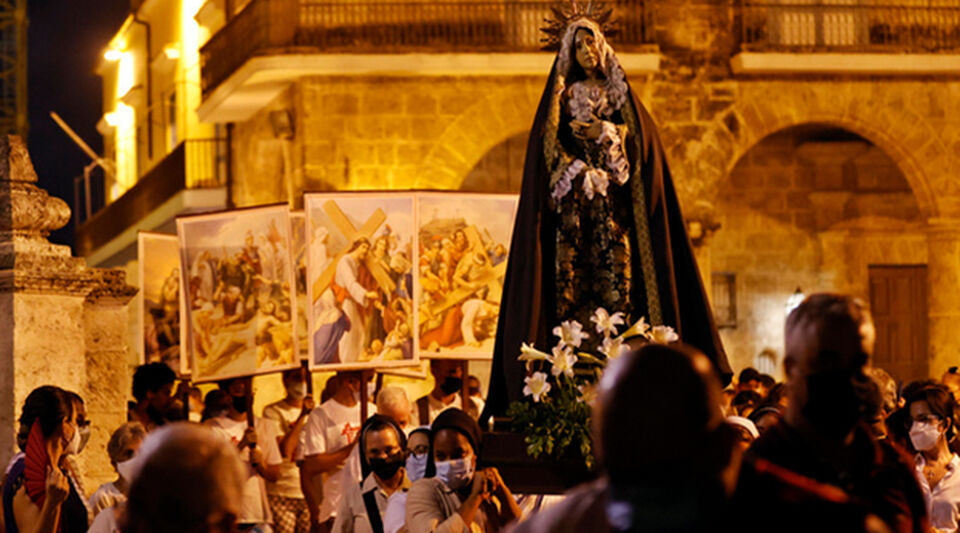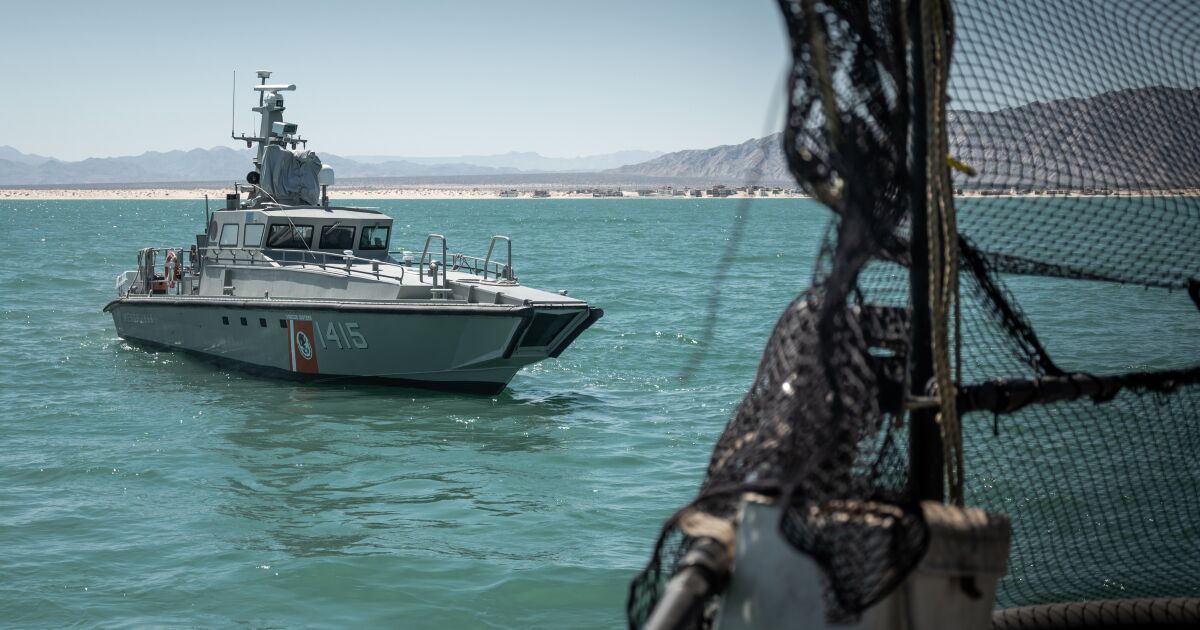The Way of the Cross on Good Friday returned to the streets of Havana again after two years of isolation for Cuban Catholics due to the crisis generated by the covid-19 pandemic.
Hundreds of people of all ages -most of them adults- joined the procession that started from the parish of Cristo del Buen Viaje, a temple in the historic center of the Cuban capital to walk the path of the 14 stations that set the way to step the religious act, which represents the death of Jesus.
At the exit of the procession, the vicar general and chancellor of the Archdiocese of Havana, Ramón Suárez Polcari, urged the faithful to “remain firm in faith and good work.”
A group of believers carried the images of Jesus of Nazareth -carrying his cross and crowned with thorns- and the Virgin Mary of Sorrows through the narrow alleys of the oldest and most popular area of Havana.
Residents and onlookers watched the Stations of the Cross stationed at the doors of their homes, on the sidewalks or from the top of balconies and rooftops for more than a kilometer
The procession – presided over by the Cardinal and Archbishop of Havana, Juan de la Caridad García – brought together priests, nuns, deacons and faithful, accompanied by a car with a speaker, from which songs were heard.
But also prayers for Cuba, with votes in favor of solidarity, forgiveness, faith, respect for values, reconciliation, overcoming divisions, as well as for those who must ensure the common good and particularly those most in need. .
Residents and onlookers watched the Stations of the Cross stationed at the doors of their homes, on the sidewalks or from the top of balconies and rooftops over more than a kilometer, which had its penultimate stop at the imposing Havana Cathedral and ended at the rhythm of a funeral march in the church of the Holy Angel.
In the same way, his passage attracted the eyes of numerous tourists who walked through the area they frequent the most when they visit Havana.
Ana María Martínez, arrived early at the Buen Viaje temple, of which she is practically a neighbor, and assured that she was moved “by a lot of faith, because I will always have it.”
Ana María Martínez, arrived early at the Buen Viaje temple, of which she is practically a neighbor, and assured that she was moved “by a lot of faith, because I will always have it.” According to what she told Efe, she has been left without a family: her only sister died from covid and her nephews live in the United States.
“I have great hope that life will return to the way it was before, although we continue to suffer from this disease. There are many people who have not lost faith and today I have come to ask God to help me,” he said.
A few meters away, Adrián Rodríguez, a 27-year-old who supported the organization of the Stations of the Cross, considered it “very important” that it could be carried out because it gives hope to “move forward”, after the country’s economic situation had deteriorated, which in its This opinion “has had repercussions at the community level with the increase in faith”, although it has also triggered emigration.
In 2012, then-Pope Benedict XVI made a pastoral visit to Cuba, during which he asked the then-president of the island, Raúl Castro, to restore the commemoration of Good Friday as a holiday, which had been suspended for almost half a century.
In Cuba, with more than 11.2 million inhabitants, it is estimated that 60% of the population is Catholic, according to the number of people baptized in the Caribbean country
That year and the next, the Cuban government declared Good Friday an “exceptional” holiday in consideration of Ratzinger’s request, and since 2014 it considered that Christian date as official in the island’s calendar.
In Cuba, with more than 11.2 million inhabitants, it is estimated that 60% of the population is Catholic, according to the number of people baptized in the Caribbean country.
The relations between the Catholic Churches and the Government experienced tensions at the beginning of the revolution in 1959, and later for years they remained with ups and downs until the beginning of the 1990s, they transitioned to a relaxation, especially since the historic visit of Pope John Paul II in 1998, which was followed by that of Benedict XVI and the current Pontiff Francis.
________________________
Collaborate with our work:
The team of 14ymedio is committed to doing serious journalism that reflects the reality of deep Cuba. Thank you for joining us on this long road. We invite you to continue supporting us, but this time becoming a member of our journal. Together we can continue transforming journalism in Cuba.








